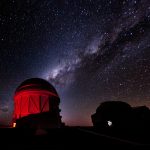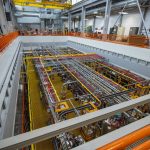The DOE’s Office of Science has selected two Fermilab scientists to receive the 2021 DOE Early Career Research Award, now in its 12th year. Farah Fahim and Brian Nord have received the prestigious award, which is designed to bolster the nation’s scientific workforce by providing support to exceptional researchers during the crucial early years.
News
The Dark Energy Survey collaboration has created the largest ever maps of the distribution and shapes of galaxies, tracing both ordinary and dark matter in the universe out to a distance of over 7 billion light years. The analysis, which includes the first three years of data from the survey, is consistent with predictions from the current best model of the universe, the standard cosmological model. Nevertheless, there remain hints from DES and other experiments that matter in the current universe is a few percent less clumpy than predicted.
From Pour la Science, May 19, 2021: Is the Standard Model of Particle Physics at fault? The comparison of the first results of the Muon g – 2 experiment on the measurement of the anomalous magnetic moment of the muon and the most recent theoretical results does not yet allow a conclusion.
From Positively Naperville, May 24, 2021: A report on the April 7 Muon g-2 result announcement speculating that there must be new particles or forces that we have not yet discovered.
From Quo (Spain), May 23, 2021: An interview with Pilar Hernández Gamazo to find out the scope of the muon case that will transform our understanding of the Universe. Pilar Hernández is a professor of Theoretical Physics at the University of Valencia.
How do you build a ship in a bottle? Everything necessary to construct the enormous Fermilab-hosted international Deep Underground Neutrino Experiment must fit down a narrow, mile-deep shaft cut through solid rock. Contractors have started the months-long process of disassembling excavation equipment and lowering it underground.
From the University of Chicago, May 21, 2021: Long-time University of Chicago professor of astronomy and astrophysics, Richard Kron created the Sloan Digital Sky Survey which set the stage for the Dark Energy Survey. Although he is retiring this year after 40 years of mapping the universe, he plans on staying on as director of the Dark Energy Survey.
The ICARUS detector, part of Fermilab’s Short-Baseline Neutrino Program, will officially start its hunt for elusive sterile neutrinos this fall. The international collaboration led by Nobel laureate Carlo Rubbia successfully brought the detector online and is now collecting test data and making final improvements.
From RECCOM Magazine (Italy), May 17, 2021: Dan Hooper talks about the possible existence of another universe. Physicists believe the Big Bang created equal amounts of matter and antimatter in the early history of the universe – but they can’t explain how antimatter vanished. Perhaps it is not and it resides isolated in some remote regions of our universe.





